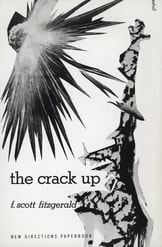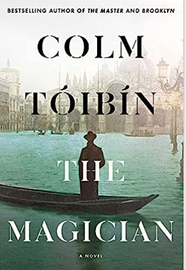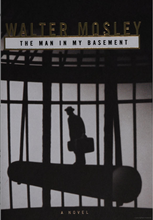FRI: My Book World | Bill Moyers, Moyers on America
TUES: A Writer's Wit | Ann Brashares
WEDS: A Writer's Wit | Whitney M. Young
THURS: A Writer's Wit | Herman Melville
|
Up Next:
FRI: My Book World | Bill Moyers, Moyers on America TUES: A Writer's Wit | Ann Brashares WEDS: A Writer's Wit | Whitney M. Young THURS: A Writer's Wit | Herman Melville
0 Comments
Up Next:
THURS: A Writer's Wit | Robyn Carr FRI: My Book World | Bill Moyers, Moyers on America: A Journalist and His Times Up Next:
FRI: My Book World | Julie Satow, The Plaza: The Secret Life of America's Most Famous Hotel TUES: A Writer's Wit | Medgar Evers WEDS: A Writer's Wit | Dorothy Kilgallen THURS: A Writer's Wit | Calvin Coolidge Up Next:
THURS: A Writer's Wit | Lillian Hellman FRI: My Book World | Alice McDermott, Absolution Up Next:
FRI: My Book World | Barbara McQuade, Attack from Within TUES: A Writer's Wit | Angela Carter WEDS: A Writer's Wit | Phyllis Wheatley THURS: A Writer's Wit | Candice Bergen Coming Next:
THURS: A Writer's Wit | S. J. Perelman FRI: My Book World | Jennifer Egan, Manhattan Beach
Coming Next:
WEDS: A Writer's Wit | Laura Lippman THURS: A Writer's Wit | S. J. Perelman FRI: My Book World | Jennifer Egan, Manhattan Beach Coming Next:
THURS: A Writer's Wit | Joe Conason FRI: My Book World | Barbra Streisand, My Name Is Barbra
Coming Next:
WEDS: A Writer's Wit | Edith Wharton THURS: A Writer's Wit | Joe Conason FRI: My Book World | Barbra Streisand, My Name Is Barbra Coming Next:
THURS: A Writer's Wit | Diana Gabaldon FRI: My Book World | Rachel Maddow, Prequel
Coming Next:
FRI: My Book World | Casey McQuiston, Red, White & Royal Blue THURS Nov. 23: HAPPY THANKSGIVING! TUES Nov. 28 : A Writer's Wit | Rita Mae Brown WEDS Nov. 29: A Writer's Wit | Peter Cameron THURS Nov. 30: A Writer's Wit | Mark Twain
Coming Next:
THURS: A Writer's Wit | Hillary Rodham Clinton FRI: My Book World | Alexander Chee, The Queen of the Night MY BOOK WORLD Fitzgerald. F. Scott. The Crack-Up, ed. Edmund Wilson. With Letters to Fitzgerald from Gertrude Stein, Edith Wharton, T. S. Eliot, Thomas Wolfe, and John Dos Passos. And essays and Poems by Paul Rosenfeld, Glenway Wescott, John Dos Passos, John Peal Bishop and Edmund Wilson. New York: New Directions, 1956 (1931). There is much to admire about this collection of essays and varied materials, some written by Fitzgerald and some penned by other contemporaneous literati. The title is derived from the author’s essay by the same name, in which he rather portrays his demise as a writer. It is a bit self-flagellating, if not a bit inaccurate. The weakest part of this tome may be “The Notebooks,” in which, by category (Anecdotes, Descriptions of Humanity, Karacters, to name a few), Fitzgerald displays journal entry after journal entry. I’ve seen this done to great effect by the likes of David Sedaris in his journals (which have been carefully edited) and John Cheever’s, as well. But here, this section contains around 150 pages of material that should probably have remained private. Some entries are so fragmented as to be nonsensical (except to the author); others seem overwritten and therefore of little value to the reader. In a strange aside, I must say a number of these entries seem to speak to Fitzgerald’s preoccupation/fascination with “homosexuals”: “I really loved him, but of course it wore out like a love affair. The fairies have spoiled all that”(99). “Fairies?” Really? “Fairy who fell for a wax dummy” (155). “He had once been a pederast and he had perfected a trick of writing about all his affairs as if his boy friends had been girls, thus achieving feminine types of a certain spurious originality” (166). Is “he” Fitzgerald himself? “When I like men I want to be like them—I want to lose the outer qualities that give me my individuality and be like them. I don’t want the man; I want to absorb into myself all the qualities that make him attractive and leave him out. I cling to my own innards. When I like women I want to own them, to dominate them, to have them admire me” (169). Honestly sounds as if the man has an identity problem. “Fairy can only stand young girls on stage, where they’re speaking other people’s lines” (201). “Fairies: Nature’s attempt to get rid of soft boys by sterilizing them” (205). “The two young men could only groan and play sentimental music on the phonograph, but presently they departed; the fire leaped up, day went out behind the window and Forrest had rum in his tea” (214). “to Gerald and Sara Murphy Honey—that goes for Sara too…” (282). A nice, jocular greeting in a letter. Ha ha. As I said, a strange preoccupation this man seems to have with gay men. He can’t decide whether he admires them or deplores them, and could he possibly be one himself? In all, however, I wish I had read this collection while I was teaching The Great Gatsby and a few of Fitzgerald’s short stories to high school AP students years ago. Doing so might have informed my pedagogy in a superior manner. Coming Next: TUES: A Writer's Wit | Gore Vidal WEDS: A Writer's Wit | Heidi Hayes Jacobs THURS: A Writer's Wit | Caroline Gordon FRI: My Book World | Barbara Kingsolver, Demon Copperhead: A Novel I meant to observe this website's 10th anniversary in 2021, but the Covid pandemic seemed to put the kibosh on that for a number of reasons. If you have time, feel free to browse the six tabs or pages by clicking on the links below. Each one sports a new look and updated information.
Coming Next:
WEDS: A Writer's Wit | Molly Ivins THURS: A Writer's Wit | William Saroyan FRI: My Book World | Bonnie Garmus, Lessons in Chemistry
Coming Next:
FRI: My Book World | Pat Conroy, The Great Santini TUES: A Writer's Wit | Dorothy Parker WEDS: A Writer's Wit | Merrie Spaeth THURS: A Writer's Wit | Stephen Fry
My Book World Tóibín, Colm. The Magician: A Novel. New York: Scribner, 2021. There aren’t enough superlatives that can be ascribed to this novel, the author of which has published twenty-four other books. This fictionalized story of literary giant, Thomas Mann, is both riveting and sobering. The young Mann writes poetry exalting his also young lovers, all male. But in his Germany he cannot get out of marrying. And in fact, he does marry a woman he loves, and they produce quite a family. The novel traces their lives as they unfold in pre-World War II Europe, and as their lives extend to America, where the Mann’s take up residence. The book as well traces the processes or problems he incurs in writing some of his important works, including Death in Venice. It seems that Tóibín utilizes only the most important details or facts, or otherwise, his five hundred page novel might be twice the journey. A joy to read if you care about world literature and its important authors. Coming Next: TUES: A Writer's Wit | Lillian Hellman WEDS: A Writer's Wit | Ian McEwan THURS: A Writer's Wit | Adam Schiff FRI: My Book World | Pat Conroy, The Great Santini
Coming Next:
WEDS: A Writer's Wit | Reza Aslan THURS: A Writer's Wit | Anna Olson FRI: My Book World | Andrew Sean Greer, Less Is Lost
Coming Next:
THURS: A Writer's Wit | C. Day Lewis FRI: My Book World | Richard V. Reeves, Of Boys and Men
Coming Next:
THURS: A Writer's Wit | Vita Sackville-West FRI: My Book World | Randy Shilts's And the Band Played On
Coming Next:
WEDS: A Writer's Wit | Robert Lowell THURS: A Writer's Wit | Matt Taibbi FRI: My Book World | Jhumpa Lahiri's Unaccustomed Earth
My Book World Mosley, Walter. The Man in My Basement: A Novel. New York: Little, 2004. A short but expansive novel with this premise: An odd little White man seeks out a Black man, Charles Blakey, because he has a large basement that is also windowless and contains only one door. Anniston Bennet’s proposition is this: that Charles will lock Anniston up in his basement for a certain amount of time. In return Charles will receive a large sum of money. Charles says no at first, but he reconsiders. Charles has inherited his two-hundred-year-old home, but it is his only asset. He’s never worked hard or steadily, in fact, has been fired from a bank for embezzling a small sum of money—thus being blackballed by the rest of the town. So Charles does agree to house the little man in his basement, basically serving as Bennet’s master. What follows is a much deeper story than what may think in the beginning. To say more would indeed spoil the read about how these two men come to terms with their pasts. Coming Next: TUES: A Writer's Wit | Tessa Hadley WEDS: A Writer's Wit | Robert Lowell THURS: A Writer's Wit | Matt Taibbi FRI: My Book World | Jhumpa Lahiri's Unaccustomed Earth
Coming Next:
THURS: A Writer's Wit | W. E. B. Du Bois FRI: My Book World | Walter Mosley's The Man in My Basement
Coming Next:
FRI: My Book World | Shy: The Alarmingly Outspoken Memoirs of Mary Rodgers TUES: A Writer's Wit | Laura Lippman WEDS: A Writer's Wit | Muriel Spark THURS: A Writer's Wit | Havelock Ellis |
AUTHOR
Richard Jespers is a writer living in Lubbock, Texas, USA. See my profile at Author Central:
http://amazon.com/author/rjespers Archives
June 2024
Categories
All
Blogroll
Websites
|